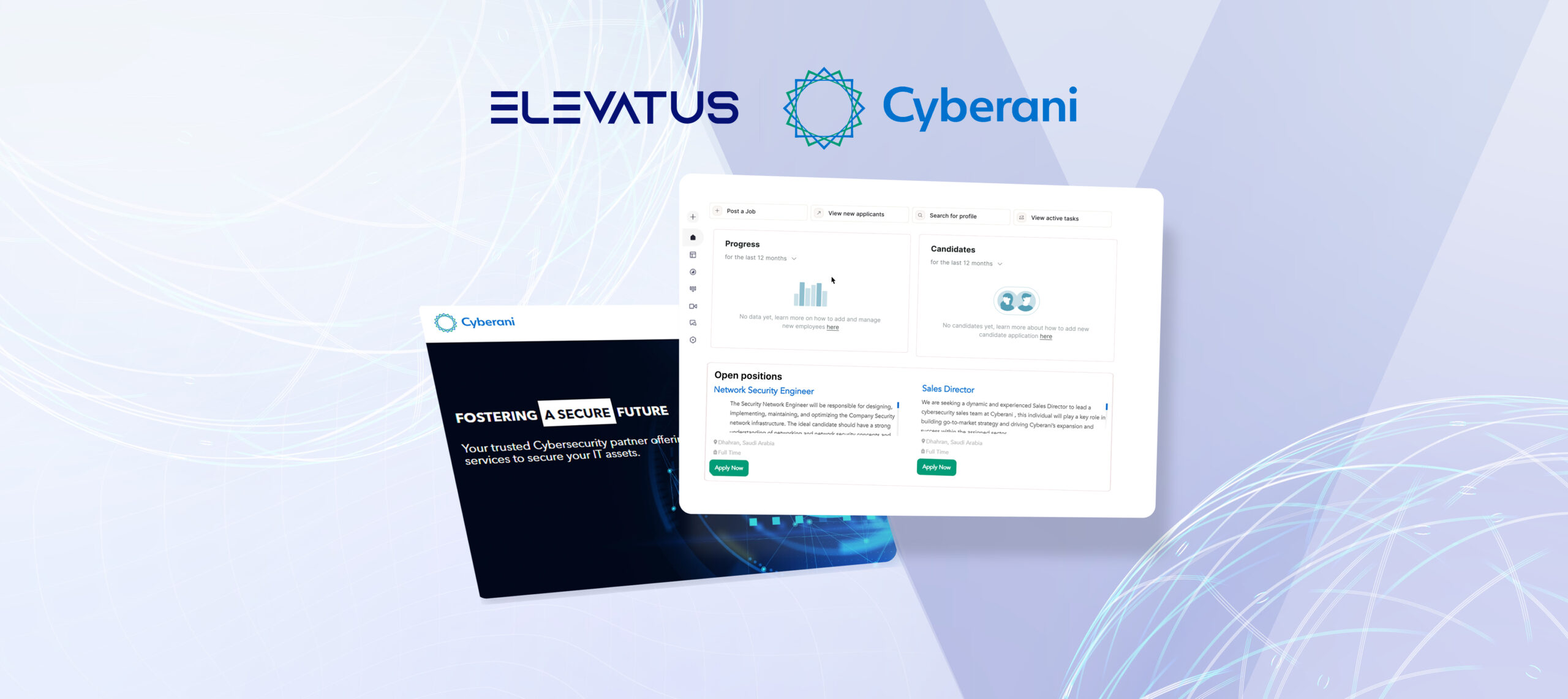
Resume Screening Checklist
January 30, 2024
Reem Al-Tamimi
Content Writer
In the high-stakes arena of hiring, where every decision echoes in the halls of your company’s future, the journey begins at a critical crossroads: resume screening.
And in the middle of the rush of deadlines and the hunt for talent, your key to success is the resume screening checklist. It goes beyond mere resume sorting; it’s about skillfully and confidently uncovering the ideal match.
So, are you ready for a resume screening process that’s less about stress and more about success? We’re handing over the blueprint that will turn this daunting task into your forte. Keep on reading as we unveil how to make hiring not just effective but also surprisingly enjoyable.
Hire with brainpower, not manpower
From job posting to onboarding – see how our next-gen ATS can help you streamline your recruitment process through AI and automation.
Request a demoResume Screening Checklist: Your Roadmap to Efficient Hiring
Resume screening isn’t just another task; it’s the opening act in the world of hiring. It serves as a guiding light, helping organizations navigate the vast sea of applicants efficiently.
A well-structured resume screening checklist is a strategic cornerstone for talent acquisition, enabling organizations to sift through a large applicant pool efficiently.
Within this process lies the invaluable resume screening checklist, a predefined list of qualities and attributes that recruiters seek on candidate resumes. This checklist fosters transparency across the recruiting team, ensuring everyone is on the same page regarding the ideal candidate profile.
Did you know that 52% of talent acquisition leaders acknowledge that screening the right talent from a large applicant pool is their most challenging task? That’s why having an effective resume screening process and checklist in place is crucial.
This checklist acts as an initial filter, swiftly eliminating unsuitable candidates. It comprises criteria such as minimum qualifications, desired skills, experience levels, software proficiency, personality traits, and industry-specific knowledge.
Collaboration among hiring and team managers, along with relevant stakeholders, is key to crafting an effective checklist. Here’s how it transforms the hiring process:
| Benefits of Resume Screening Checklist | Description |
| Focus on Quality | The checklist encourages prioritizing quality over quantity, narrowing down the pool to individuals with exceptional qualifications and long-term potential. |
| Cost and Time Savings | Efficient screening reduces recruiting costs and saves valuable time, ensuring that only the most qualified candidates progress. |
| Reduced Frustration | By aligning on must-haves and deal-breakers in advance, the final decision-making process becomes smoother and less prone to disagreements. |
Resume Screening Checklist Template
Crafting a strong resume screening process is key to efficiently pinpointing the right candidates. Incorporating effective resume screening techniques ensures a hiring process that is streamlined, fair, and sharply focused on identifying the best matches for the role. Here’s a comprehensive resume screening checklist for you. It acts as a practical guide, helping you navigate through this crucial stage of the hiring process with ease and precision.


Candidate’s Contact Information
resume screening checklist begins with a candidate’s contact information. Prominently placed at the top, this section should clearly present their full name, phone number, email address, and possibly a LinkedIn profile link. This information isn’t just routine; it’s critical for initiating contact and sets the tone for further evaluation.
Attention to detail is paramount here. Even minor errors, like a missing digit in a phone number or a typo in an email address, are more than mere slip-ups. They signal concerns about the candidate’s precision and attention to detail, qualities often crucial in any role. In the detail-oriented process of resume evaluation, such inaccuracies can serve as red flags, indicating potential challenges in the candidate’s approach to their work.
Boost your applicant tracking process
Move faster on a platform that automates admin tasks; from posting jobs to sending electronic offer letters. Elevatus helps you use AI and automation to become great at hiring.
Automate your hiringProfessional Summary or Objective
The professional summary or objective is a crucial element in the resume screening checklist, offering a snapshot of the candidate’s career goals and what they can contribute. This section needs to align with the job’s requirements, effectively showing how the candidate’s background is suited for the position. Key elements to look for here include clarity, focus, and direct relevance to the role being applied for.
This part of the resume sets the overall tone and should concisely articulate the candidate’s value proposition. For example, a candidate applying for a marketing role might include a summary that highlights their previous success in increasing social media engagement by 50%, directly showcasing their relevance and potential contribution to the new role.
Work Experience
The work experience section is the backbone of a resume, where a candidate’s professional journey unfolds. It’s best laid out in reverse chronological order, emphasizing not just the roles held but the achievements within them. When screening, prioritize finding quantifiable results and a trajectory of growth that aligns with the demands of the position you’re filling.
What you’re looking for here is a narrative of consistency and development in their career path. Job titles, the length of tenure at each position, and the progression from one role to the next are all pieces of this story. Also, keep an eye out for any significant gaps in employment, as these may warrant further exploration.
For instance, in the case of hiring a developer, a resume that charts a path from junior to senior developer over five years is a promising sign. If it’s peppered with bullet points that detail specific projects and their successful outcomes, it not only confirms their upward career trajectory but also directly showcases their relevant experience and growth in the field.
Educational Background
In the resume screening checklist, evaluating the candidate’s educational qualifications is a vital step. Ensure they meet the minimum academic requirements for the role. Pay attention to the level of education attained, the field of study, and any noteworthy achievements or extracurricular activities that could be pertinent.
This section is more than just a list of degrees; it offers a window into the candidate’s potential, particularly for positions where a specific educational background is essential. For example, consider screening for an engineering role. A candidate who lists a Bachelor’s degree in Mechanical Engineering, complemented by relevant coursework and projects, not only meets the basic requirements but also demonstrates a solid foundation that aligns with the technical demands of the position. This information can be a strong indicator of their readiness and suitability for the role.


Skills and Qualifications
The skills and qualifications section is a crucial part of the resume, tailored to highlight the abilities most relevant to the job. When reviewing this section, focus on a balanced combination of technical and soft skills that match the job’s requirements. Additionally, certifications, licenses, or specific training programs can elevate a candidate’s profile, especially for roles where these are advantageous or essential.
For example, in the process of hiring a project manager, a resume that lists skills like ‘Agile methodology’, ‘team leadership’, and ‘budget management’ would stand out. These skills directly correspond to the typical demands of a project management role. Such a clear alignment between the candidate’s skills and the job description not only shows their suitability but also their understanding of what the position entails.
Professional References
Professional references serve as an insightful resource for understanding a candidate’s past job performance and professional behavior. Although not always listed directly on the resume, an indication that references are available upon request can be a positive sign. It reflects the candidate’s confidence in their work history and professional relationships.
When a candidate notes “References available upon request” at the conclusion of their resume, it demonstrates a measure of professionalism and readiness for the forthcoming stages of the hiring process. This small detail can speak volumes about their organizational skills and anticipation of the recruiter’s needs, indicating they are well-prepared and serious about the opportunity.
Format and Organization
The format and organization of a resume are more than just aesthetic choices; they are indicative of a candidate’s professionalism and meticulousness. When reviewing a resume, prioritize those that are well-structured and easy to navigate, with clear headings, consistent font use, and judicious application of bullet points. These elements contribute to a resume that communicates information effectively and efficiently.
A resume that shows a clean, modern design, employing bullet points for succinctness and bold headings to demarcate sections, is a testament to the candidate’s organizational skills and their keen attention to detail. Such a resume not only makes a positive visual impact but also facilitates a smoother review process, allowing key information to be accessed quickly and accurately. This consideration for the reader’s experience can be a strong indication of the candidate’s approach to professional tasks.
Customization and Relevance
A customized resume is a clear indicator that the candidate has dedicated time and effort to align their application with the specific role and organization. When screening resumes, it’s important to look for specific mentions of skills and experiences that correlate directly with the job description. This level of customization not only shows the candidate’s relevant qualifications but also reflects their genuine interest and enthusiasm for the position.
For instance, when considering a candidate for a graphic designer role, a resume that specifically highlights experience in branding and web design stands out. This direct alignment with the key requirements in the job posting demonstrates that the candidate is not only qualified but also attentive to the specific needs of the role. Such targeted detailing in a resume is a strong sign of a candidate’s proactive approach and their commitment to securing the position.


Achievements and Accomplishments
In the resume screening checklist, identifying standout achievements is key to understanding a candidate’s ability to deliver tangible results. Focus on quantifiable accomplishments, awards, recognitions, or significant project completions. This kind of information can set a candidate apart, especially when their background and experiences are similar to others.
For example, consider an applicant for a sales position who includes a specific achievement like, “Exceeded annual sales target by 20% in 2023.” This clear, quantifiable accomplishment not only illustrates their capability to deliver results but also provides a measurable track record of their success. Such precise achievements give a clear indication of the candidate’s potential impact and effectiveness in the role.
Volunteer Experience and Extracurricular Activities
Volunteer work and extracurricular activities on a resume offer valuable insights into a candidate’s personality, values, and the additional skills they possess in the resume screening checklist. These experiences are especially relevant when they showcase qualities like leadership, teamwork, or other attributes that are pertinent to the role being filled.
For instance, if a candidate includes their experience as a volunteer coordinator for a local charity, this highlights not just their leadership skills but also their commitment to community involvement. Such an inclusion is particularly beneficial for roles in team-oriented workplaces, as it demonstrates the candidate’s ability to lead, collaborate, and engage in a community-focused environment. This kind of information can provide a more holistic view of the candidate, beyond just their professional qualifications.
Gaps in Employment
Employment gaps on a resume can initially appear as red flags, but they also present an opportunity to gain deeper insights into a candidate’s career journey. It’s important to look for any explanations provided for these gaps. In many instances, they can be justified by legitimate and constructive reasons such as further education, personal growth experiences, or other significant life events.
For example, if a resume shows a two-year gap in employment, but the candidate explains this as a period when they returned to university for further education, it provides a valid and positive context for the break. This not only alleviates concerns about the employment gap but also adds to the candidate’s profile, showing a commitment to self-improvement and professional development. Understanding the reasons behind such gaps is crucial for a fair and comprehensive evaluation of a candidate’s history and potential.
Overall Impression
The overall impression a resume leaves is fundamental. It’s not just about the individual elements, but how they come together to form a cohesive and professional whole. A resume that effectively weaves together experience, skills, and qualifications into a coherent narrative is indicative of a candidate’s ability to communicate clearly and effectively.
For example, a resume that uses a consistent font, clear headings, and well-organized content projects an air of professionalism and thoroughness. This level of care in presentation suggests that the candidate is meticulous and attentive to detail. Such a resume does more than just list qualifications; it tells a story of a well-prepared professional, ready to take on new challenges. This overarching sense of cohesion and clarity in a resume is often reflective of how a candidate might approach their work and responsibilities.
Legal Compliance
Ensuring that a resume adheres to legal standards is a critical aspect of the screening process. It’s important that the resume focuses solely on professional experience and skills, steering clear of any personal information that could lead to discriminatory practices, such as age, marital status, or religion. Compliance with these legal standards is not just a legal necessity but also a cornerstone of ethical hiring practices.
For instance, a resume that sticks strictly to detailing professional experiences and skills, without veering into personal details like age or marital status, is in line with these legal and ethical norms. Such adherence underscores the candidate’s awareness and respect for professional boundaries. This approach not only protects the company from potential legal pitfalls but also fosters a fair and unbiased evaluation process.


Compatibility with ATS (Applicant Tracking System)
Evaluating a resume’s compatibility with Applicant Tracking Systems (ATS) is an essential step in modern recruitment processes. Many organizations rely on ATS to filter and sort resumes, making it crucial that a resume is formatted to be ATS-friendly. If a resume isn’t structured to be compatible with these systems, it risks being overlooked, regardless of the candidate’s qualifications.
For example, a resume that is structured with a clear, straightforward layout and uses standard headings is more likely to be ATS-compatible. This kind of formatting ensures that the ATS can easily read and process the information, increasing the chances that the resume will successfully pass through the initial screening and reach human reviewers. Ensuring ATS compatibility is a key consideration in the resume screening process, as it helps in identifying candidates whose qualifications are most closely aligned with the job requirements.
Additional Notes
Identifying red flags is a crucial aspect of resume screening. Pay close attention to unexplained employment gaps, frequent job changes, overqualification, underqualification, and any inconsistencies in the provided information. For instance, a resume that reveals a pattern of changing jobs every few months can be a warning sign, suggesting potential issues with the candidate’s stability and commitment.
On the other side, assessing cultural fit is equally important in a resume screening checklist. It involves evaluating how well a candidate’s values and work style align with the company’s culture and team dynamics. For example, if a resume and cover letter display a clear enthusiasm for collaborative work and innovation, and these qualities match the company’s focus on teamwork and creativity, it indicates a potentially good fit. This alignment suggests that the candidate is not only qualified but also likely to thrive and contribute positively to the company culture.
Challenges and Solutions in Resume Screening
Navigating the maze of resume screening checklists can be a game of detective and strategist rolled into one. A key challenge is sifting through a mountain of applications to find those gems – the candidates who truly fit. Overwhelm and bias can sneak in, turning this task into a Herculean effort. But fear not! Implementing a resume screening checklist turns chaos into order. This checklist ensures no crucial element is missed and maintains consistency across all applications.
Another hurdle? The dread of overlooking a stellar candidate because their resume didn’t play nice with the Applicant Tracking System (ATS). The solution? Encourage ATS-friendly resumes – think of clear formats and keyword optimization.
Let’s not forget the importance of cultural fit – it’s like finding the right puzzle piece that perfectly slots into your team’s dynamic.
To wrap it up, the art of resume screening is pivotal in fishing out the best. It’s a blend of intuition and process, where a well-crafted checklist and some smart software can be your best allies. Speaking of which, why not make life easier with software designed specifically for resume screening?
EVA-REC is an end-to-end ATS that helps companies from all over the world find, hire, and build talented workforces. With EVA-REC, you can build modern career pages that convert, integrate with world-class technology providers, and automatically post jobs on 2,000+ global job boards. Filter resumes fast, rank candidates in order of qualification, and seamlessly collaborate with teammates – all in one single, integrated solution. Request a free demo!
Explore our extensive collection of HR templates, your toolkit for streamlined recruitment. With our customizable templates, you can quickly transform blank pages into polished HR documents. Simply browse, select your templates, add your personal touch, and download them at no cost.
No need to start from scratch. Browse through our ready-to-use Practical Tips for HR, Tutorials, and HR Planning Guides:
Turn top talent to employees fast
Hire, assess, onboard and manage top talent for every job. See how Elevatus streamlines everything; from acquire to new hire.
Request a demoAuthor
Reem Al-Tamimi
Don't miss a thing!
Stay one step ahead. Subscribe and get the latest updates, news, and insights from Elevatus straight to your inbox.





